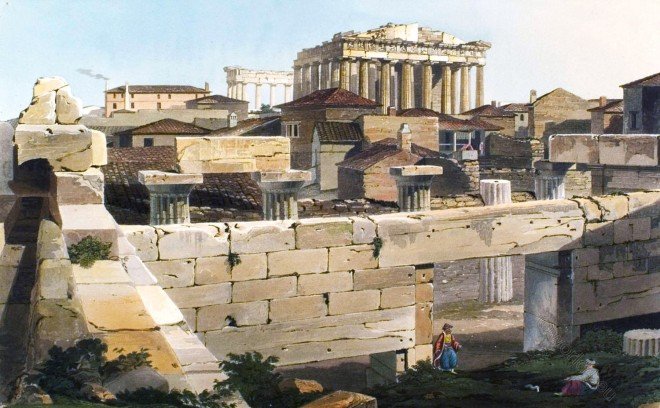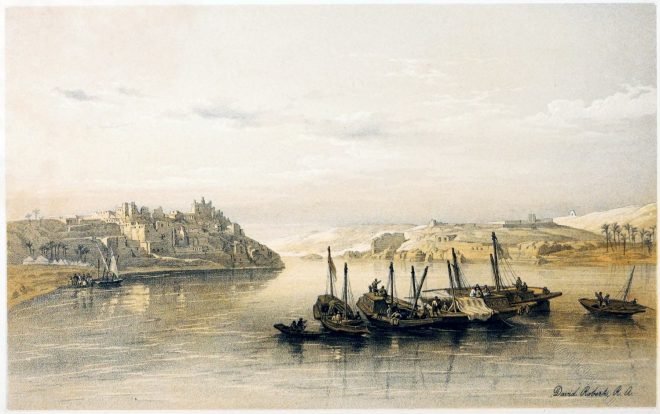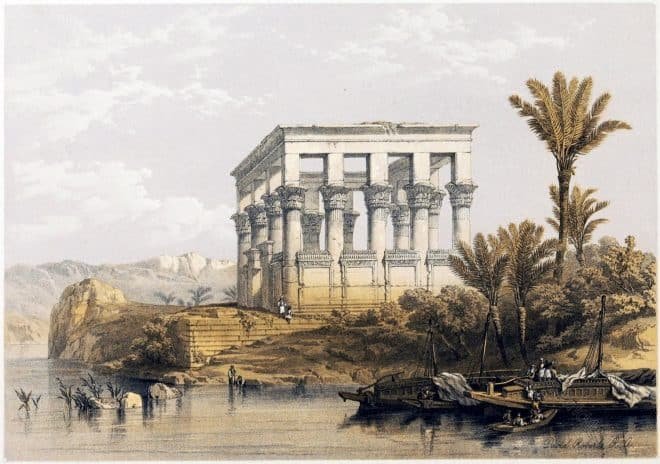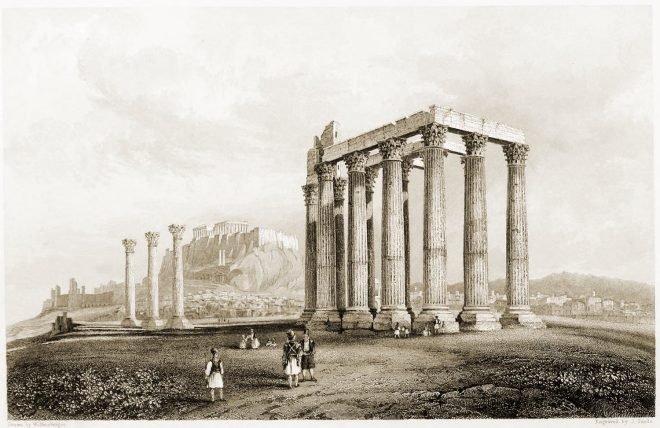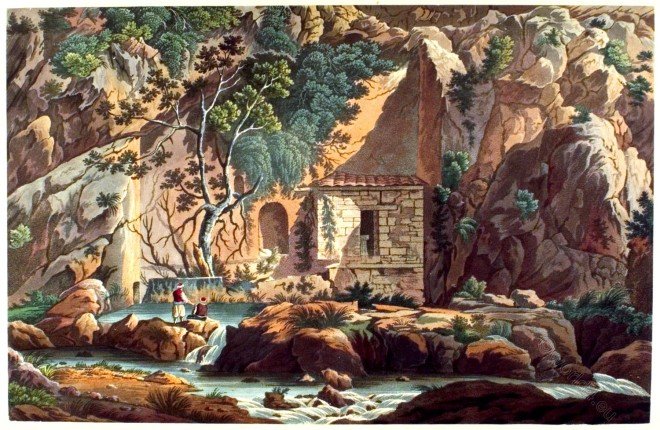The Parthenon is the temple to the city goddess Pallas Athena Parthenos on the Athenian Acropolis.
Category: Ancient
Aswan the ancient Syene and the island of Elephantine.
Aswan was the ancient Syene; in the Coptic language it signified an opening, derived from the sudden widening of the Nile below the Cataracts.
View from under the Portico of the Temple of Dendera, Egypt.
The Temple of Dendera is an ancient Egyptian temple complex in Dendera, 55 km north of Luxor in Upper Egypt. It is one of the most important temple sites in Egypt and was dedicated to the goddess Hathor.
The Pyramids of Giza. The Great Pyramid of Cheops.
The Pyramids of Giza. The Great Pyramid of Cheops. Pyramids of the pharaohs Khafre and Mykerinos.
The Hypaethral Temple at Philae, called the Bed of Pharaoh.
The Hypaethral Temple of Philae by David Roberts. The Holy Land, Syria, Idumea, Arabia, Egypt, and Nubia.
Front Elevation of the Great Rock Temple of Abu Simbel, Nubia.
Abu Simbel (Egypt), Great Rock Temple (built under Ramses II 1290-1224 BC). Exterior view.
Watercolour, 1838/39, by David Roberts (1796-1864). Engraved by Louis Haghe
The Olympieion (also Columns of the Olympian Zeus) in Athens.
The Olympieion (also Columns of the Olympian Zeus) in Athens was one of the largest temples in ancient Greece. Its construction dates back to the 6th century BC, but it… Read More
The Lantern of Diogenes or Choragic Monument of Lysicrates at Athens.
The Choragic Monument of Lysicrates near the Acropolis of Athens was erected by the choregos Lysicrates in the 2nd half of the 4th century BC
The toga of a Roman senator. The armor of a Roman general.
Costume of the Roman Empire 31 B.C.- 476 A.D. The figure symbolizes the two characteristics that made Rome great statesmanship and military power
The Castalian Spring near the sanctuary of Delphi.
In ancient times, pilgrims purified themselves at this spring before entering the sacred precincts of Delphi.

